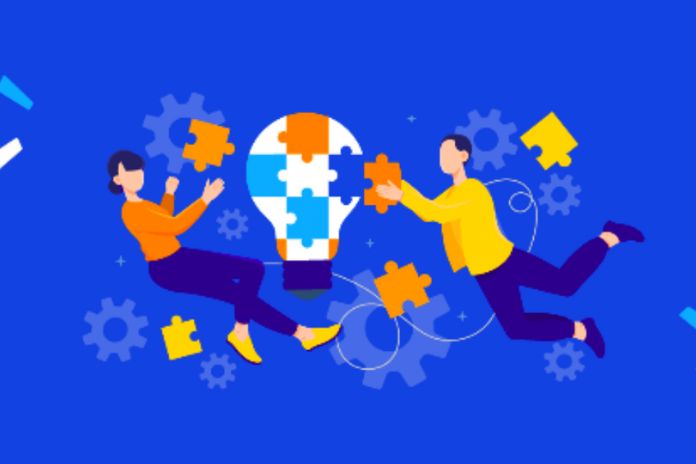Microlearning: More and more, training and qualifications have new content in line with the expectations of more technological generations.
At the same time, another phenomenon is the face of today: the need to gain time. You must have seen the recent WhatsApp update with the function to speed up audios, right? Another example of how we have prioritized speed is in the famous TED conference: the presentation of ideas quickly and dynamically is the great insight behind the success of this initiative.
For all these reasons, microlearning emerges as an innovative solution compatible with current needs. It is an approach to learning through small, highly focused content blocks presented in dynamic, short-lived formats.
Want to understand better this significant trend and why it brings great benefits to corporate education? So, keep reading this guide and check out everything you need to know about it!
What Is Microlearning?
As we said, we live in an era where information is shared at a record pace and in a very dynamic way. Exposure to content 24 hours a day, our attention becomes more selective: we need something to be fast and relevant to keep focus among so many stimuli.
That’s why content like TED talks is so successful. This search for more dynamic, focused, and lean learning processes motivates microlearning — from the English “microlearning” —an approach that is increasingly present in the training and development of people.
These on-demand knowledge pills can be transmitted to employees in the most diverse formats and media. Microlearning content is highly focused on specific needs and is short, typically up to 5 minutes.
Microlearning does not prevent the company from providing more extensive training. However, the broad subjects must be taught in small doses: each content is dedicated to a specific skill or knowledge. This highly focused approach helps employees better retain information.
However, attention: microlearning is not just about extracting small pieces of a long course and transmitting them separately to collaborators. In this approach, the contents are specially designed so that the information is “independent” through dynamic resources that provide a practical learning experience.
How Does This Tool Work?
Now that you understand the concept behind microlearning let’s see how this proposal works? Some essential features of the contents are:
- focus — each content must be directed to a single problem or information;
- on-demand production — a microlearning module needs to be geared towards a particular need;
- Duration — as you’ve seen, the short duration is one of the main characteristics of this approach. There are no rules, but the contents are usually 3 to 7 minutes;
- dynamism — to capture attention and ensure effective assimilation of information, content must be as dynamic and interactive as possible;
- decontextualization — no matter how much a microlearning topic is part of a broader learning path, each content must make sense individually;
- variety — many formats serve the role of microlearning well, including video tutorials, podcasts, presentations, flipbooks, games, simulations, online classes, etc.;
- Accessibility — in this approach, the contents are usually digital, so another important aspect is that the material can be accessed when necessary, being compatible, for example, with smartphones and tablets.
If you’ve ever used the Duolingo language learning app, you’ve had a microlearning experience. After all, the contents are passed in small doses and are very interactive, with a gamification dynamic.
What Are Your Benefits?
Microlearning has become a big trend, and it’s no wonder. As you have seen, it is a solution that is very much in line with current needs and, therefore, responds perfectly to the new behavior of people in their teaching-learning processes.
Especially in the new generations, such as the so-called digital natives, learning needs to be objective and personalized to generate engagement. To give you an idea, a study published in the Journal of Applied Psychology and released by LinkedIn revealed that the microlearning approach is about 17% more effective than traditional teaching methods.
Knowing this, see the reasons that lead to the effectiveness of microlearning!
Time Optimization
Microlearning provides a corporate education where time is optimized, as employees have shorter and more efficient corporate training . Therefore, this characteristic impacts an organization’s productivity. There is no need for delays in team tasks due to lengthy courses, which will not always be 100% used.
Easy Production And Maintenance
In comparison to more extensive content, microlearning requires less time in its production, which also positively affects the company’s productivity. Not to mention that, as they are independent modules, the contents can be updated and modified without much complication.
Possibility Of Customization
As they are short and highly focused materials, it is much easier to segment the contents, according to an Individual Development Plan (PDI). Having personalized training for each demand is the recipe for success so that information is put to good use. The same topic can be explored in several materials, each oriented to the needs of different audiences.
Format Diversification
Another benefit that goes hand in hand with the previous one is the possibility of diversifying formats, creating several versions of the same content. The company can, for example, create a tutorial on a particular sales negotiation technique and provide it in video and podcast.
Also Read: What Types Of Data Are Used In Big Data?

